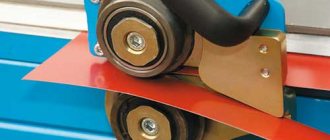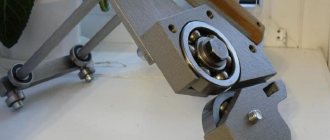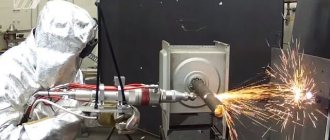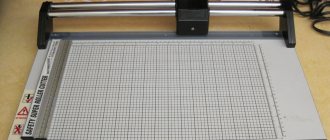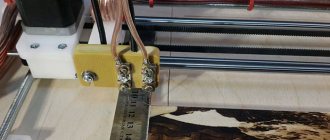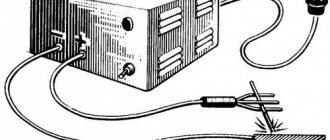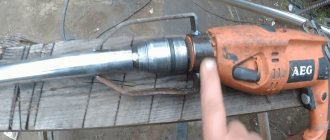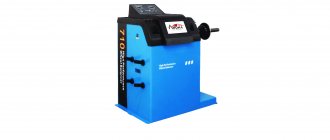Tips for choosing a paper cutter
A cutter is an indispensable attribute for offices, printing houses and needlewomen. The cutter allows you to cut paper to the required format, cut brochures, and badges. The main advantages of the device are fast and smooth cutting. There are a wide variety of knives and scissors on the market, but why should you choose a paper cutter? This is what is discussed in detail below.
– Reciprocating cutters are considered universal and the most powerful, the maximum cutting batch reaches 50 sheets, most often 20-30 sheets. They are used for cutting medium-sized paper runs in copy centers and offices. They cope with cutting a wide range of materials, such as: paper, foil, cardboard, tracing paper, leather. According to the principle of operation, a reciprocating cutter resembles scissors. A sharp knife is attached to one edge, and a handle is located to the other edge. To avoid injuries, manufacturers added a protective casing to the design; for greater efficiency, many models were equipped with a counter knife. Despite the sharpness of the knife, the cutting accuracy of reciprocating cutters is less than that of disc cutters. The larger the cutting batch, the lower the accuracy. This can be corrected by reducing the cutting run, but labor costs will increase accordingly. For cutting large batches of business cards or small-format printed products, this type of cutting is impractical.
A significant disadvantage of a reciprocating cutter is the difficulty of sharpening the knife. The saber knife has an ellipsoidal shape, so simple sharpening will not work. Sharpening knives of this shape requires expensive equipment, which is why the price of new knives is not low.
Despite all the shortcomings, the type of reciprocating cutting is very popular and widespread due to its compactness and low cost of the device.
– Roller (disc) cutters . Used in offices, photo studios, advertising agencies. They allow you to cut batches of up to 20 sheets evenly (without displacement), a suitable option for cutting small runs of printed materials and trimming. The principle of operation is to move the cutting element along the guide. The cutting element is located in a protective casing, which moves along the rod. A counter knife (metal plate) is installed on the work table; when cutting, the cutting line is located between the cutting element and the counter knife. This method allows you to cut small volumes of paper without significant deviations in accuracy. The disadvantage is the deflection of the rod (the longer it is, the faster the deflection will appear) and the formation of gaps between the disc and the counter knife. The advantage of disc cutters is the ability to work with large paper formats, up to A0 format. The disc design allows you to combine several useful functions in one device: cutting, running, curly edge. The cutting element (disk) wears out quickly, so manufacturers produce a wide range of components for both straight and shaped cutting at a relatively low cost. Replacing the cutting tool is not difficult. It is because of their ease of maintenance and low cost that roller cutters are popular in small printing houses and offices.
– Guillotine cutters are designed for printing houses and offices with high turnover. The device takes up a lot of space and has an impressive weight. The heavy knife and reliable design allow you to cut a run of 200 sheets. The operating principle of a guillotine cutter is not entirely similar to the well-known guillotine. In addition to the straight cut, manufacturers have modified modern models and introduced the possibility of an oblique cut. The advanced design adds efficiency to the device and allows it to handle large volumes of paper. Important advantages include high cutting accuracy, which reciprocating cutters cannot boast of. Modern models are equipped with an illuminated cutting line, optical rulers and a vernier. Manufacturers took the issue of safety very seriously; as far as is known from history, the guillotine is a rather traumatic (to put it mildly) device. For this reason, most of the models presented are equipped with light-sensitive sensors that immediately stop the operation of the knife if foreign objects enter the cutting line. Small desktop models are equipped with a protective casing.
The advantage of the design is ease of maintenance and reasonable costs for replacing parts (knives). Guillotine cutters allow the knife to be removed and re-sharpened in workshops. Large and heavy knives are less susceptible to wear, deformation, and chipping. After several “handicraft” knife sharpenings, it is recommended to purchase a new one.
In addition to the knife, it is necessary to monitor the condition of the marzan - a strip located on the working surface along the cutting line. Typically, the marzan is made of plastic or wood and serves to soften the blow of the guillotine, preventing damage and rapid dulling of the blade. Marzan is the same consumable item as a knife, it is commercially available and can be easily replaced.
Another advantage of the guillotine cutter is its noiselessness; none of the previous types can boast of such a feature. On an industrial scale, when cutting occurs all day, the noise should not be discounted.
However, it is not practical to buy guillotine cutters for small businesses and offices; using such a cutter on stacks of 20 sheets is not profitable.
Maximum format and work surface
Manufacturers indicate the maximum cutting format in cutters; the device will cut any smaller format. All existing formats are specified in ISO 216.
A0 and A1 - posters, drawings.
A3 and A2 - newspapers, drawings, posters.
A4 is the most common paper size, on which everything from documents to leaflets and magazines is printed.
A5 - postcards, leaflets, booklets.
In addition to the supported format, you need to pay attention to the layout of the desktop; the more centerlines on the surface, the easier it is to orient and align the stack of paper. The presence of markings in degrees is a convenient addition to vertical and horizontal landmarks. It is also worth considering the material used to make the work surface; there are models made of plastic or metal. Small mobile models are equipped with a plastic surface; the design made of modern plastics is light and durable. However, metal is considered a more wear-resistant option and makes the cutter much heavier, which is why it is more often used on stationary devices.
Scrapbooking Basics. Tools for cutting paper.. Discussion on LiveInternet
Quote from Jane-krasotka
Read in full In your quotation book or community! Paper cutting tools A paper cutter is a device for cutting paper quickly and evenly. Very useful when designing scrap pages and postcards. The cutter allows you to cut a sheet of paper so smoothly that no scissors can cut it.
According to the method of impact on the knife, cutters are divided into mechanical (manual) and electric. In turn, hand cutters come in roller, saber and guillotine types.
A roller cutter (also known as a disk cutter or trimmer) is a rectangular base (work table) along which the cutting mechanism moves along a guide. It, in turn, consists of a sharpened metal disk enclosed in a protective casing.
When cutting, the paper ends up between the roller cutter blade and the counter knife (a hard metal plate attached to the end of the platform on the side where the cutter moves).
This cutter is ideal for working with a small amount of paper - up to 10 sheets; it comes in different sizes, the most common being 22.5 x 12.5 cm; 31 x 31 cm; 20 x 46 cm.
It takes up little space and has a valuable quality - the ability to cut an edge less than a millimeter wide, which allows you to work with maximum precision. In roller cutters, the knives are not subject to secondary sharpening, although they are called self-sharpening. They just need to be changed after a certain time.
The saber cutter is called because of the knife, which is similar to a saber. The reciprocating cutter is the most powerful and is used for working with large volumes of paper, but their accuracy remains within 0.1 mm. Reciprocating cutters have a slightly different operating principle.
The sharpened knife of the cutter is fixed at one end (to avoid injury it is covered with a protective casing), and at the other it has a handle. By lowering it, they cut the paper. The knife can be sharpened in a reciprocating cutter, although this procedure is not as simple as it seems at first glance.
In addition, using a reciprocating cutter is much more difficult than using a roller cutter. To get the perfect result, you have to try.
The guillotine cutter is used for processing large print runs and is perfect for large printing houses. This cutter can be manual, semi-automatic or automatic.
Its working mechanism (a sharpened heavy cutter knife) is located on a massive table and is driven by a lever or electric drive. The blade moves not only from top to bottom, but also obliquely along the cutting line and is capable of “processing” impressive stacks of sheets up to 8 cm.
In this case, the accuracy reaches fractions of a millimeter. When the cutter knife becomes dull, it is removed and sharpened, and after several sharpenings it is replaced.
A breadboard knife is used for cutting paper, sharpening pencils, and is also necessary for cutting out small parts and complex shapes. It is a thin, replaceable blade similar to a feather with a protective cap. When working with such a knife, you must have a breadboard mat (cardboard, hardboard or plywood) so as not to damage the table on which you are working.
Roller breadboard cutters allow you to quickly and effortlessly cut paper, as well as make a variety of shaped cuts with special attachments.
The circular knife is used for cutting circles with a diameter of 10 mm to 150 mm. Ideal for making cards and round parts for scrapbook pages.
The knife is an axis with a needle and a movable leg on which a blade is mounted, by means of rotation of which a circle is cut. There is also a scale on the movable leg for selecting the diameter of the circle to be cut.
It is necessary to work with a compass knife on a breadboard mat. Make sure all screws on the compass are tight before cutting.
A shape cutter can easily cut out any shape using a special stencil; it is indispensable when creating decorative elements for pages and postcards. Some models of shape cutters can be used without a stencil.
When working with such a cutter, you must have a prototype mat so as not to damage the table on which you are working and be sure to check the serviceability of the blade and, if necessary, adjust it in accordance with the density of the selected material.
Series of messages “basics of basics”:
Part 1 - Color in scrapbooking. Part 2 - Tools.
... Part 8 - Scrapbooking Tools: Shaped Hole Punchers Part 9 - Glue Gun Part 10 - Paper Cutting Tools Part 11 - Where to start? Memo for a beginner Part 12 — Tinting the edges of paper in scrapbooking Part 13 — Hot embossing without a stamp pad Part 14 — An alternative to stamps Part 15 — 12 techniques in scrapbooking
Paper cutter | www.samsmasteril.ru
This homemade product can be useful for anyone who works with paper or cardboard. It does not require large financial expenditures. But with careful work it will provide a “clean” cut of any paper format.
Before we begin discussing the topic, I note that today we will talk exclusively about straight cutting of one sheet of paper. Now let's get down to business.
Each of us at least once in our lives is faced with the need to cut paper (cardboard). What tools do we use for this? Of course, with scissors. If you need a more or less even cut, then a knife and a ruler are used. For absolute cleanliness of work, it is better to use a proprietary cutter. Let's figure out what the advantages and disadvantages of each of them are.
Trying to make a manual guillotine with your own hands
Metalworking machines are expensive and complex equipment that not every workshop, let alone an individual, is able to buy. But many of the machines can be made independently. For example, a manual guillotine for cutting metal with your own hands is not such an unattainable goal. All you need is the ability to work with welding and some plumbing tools.
Naturally, it is impossible to do without financial investments. For example, there is no way to make knives yourself. This is a complex factory-produced part that requires special steel and machines to process it. But you can easily buy guillotine knives on the market, on the Internet or in specialized stores.
If they offer guillotine knives that have worked for several years at a large factory, you can buy them, but be mindful of what kind of metal you are going to cut on your machine. If roofing steel or corrugated sheeting, then buy without fear. After sharpening, they will cope with such a task without difficulty. But for cutting reinforcement, corners or sheets thicker than 1.5 mm, new knives will be required, without “work experience”. They are relatively inexpensive, and you can choose them by length, sharpening angle and height.
A knife made from a spring will never have the capabilities of a factory one.
Many craftsmen use various metal machine parts for knives, for example springs made of steel of sufficient hardness. But such scissors will be useful only for rough cutting of thin-sheet steel - achieving ideal straightness of the blade without lateral deviations at home is difficult, almost impossible. It is better to stop at buying factory-made knives. The peculiarities of the interaction between the knife and the steel sheet require special strength of the cutting edge.
Model knife
If a person works with leather or suede, patterns or sewing, then, of course, he should have quite a lot of different tools for needlework. Among such items there must be cutting tools, which, in turn, simply must have good cutting characteristics and reliability. Each master needs his own tool.
There are quite a lot of varieties of them and there are constantly disputes around them. Which one is most suitable for a particular area of handmade. This tool is called a breadboard knife. Let's try to look at a few key models. Based on their characteristics, anyone can choose the most suitable option for themselves.
Varieties of model knives
A true specialist is able to make a masterpiece out of any available means. This, of course, can be called “aerobatics.” And there are only a few such masters.
But beginners and experienced craftsmen quite often resort to the help of an ordinary stationery knife and well-sharpened scissors. Even with these two simple items, skilled hands can do quite a lot.
But it’s not in vain that they came up with a model knife that will make work easier and increase the speed of performing various tasks. There are several types of them:
1. This option can be called one of the most popular and popular among masters of various levels.
An important element of this knife is the collet clamp .
The clip itself may be made of plastic, which is not very good. The plastic clamp tends to become loose over time, and the resulting play will not allow it to work normally. The origin of the name of the cutter comes from the way the blade is attached - a collet knife. Another piece of advice from professionals: try to buy a knife with a minimum of plastic parts, don’t skimp. If you buy an all-metal one, it will last for years. You can also purchase additional replacement blades for it. I also replaced the model knife, like new.
Model knife with collet clamp.
2. The most expensive, but at the same time one of the best, is considered to be a scalpel knife . In terms of their characteristics, they are often not inferior to a real medical scalpel.
And frankly, in the office of a surgeon or orthopedic dentist, you can find some pretty interesting and necessary tools for handicrafts. Alternatively, you can buy disposable scalpels at the pharmacy. They look like a fountain pen, but instead of a feather there is a blade.
But it is better to buy an all-metal structure, it is easier and more convenient to work with. With such a tool you can easily do wood carving and all the work will be done with pinpoint precision.
By the way, such a stationery scalpel knife usually comes with replacement blades. It also handles paper and cardboard easily.
3. Another type of modeling knife is better for working with fabric. They simply call it a disc cutter . And when working with fabric or paper, it can cut several layers at once.
And it can make a fairly long cut; these are truly two key qualities of such a knife.
Its sizes are quite varied, and before purchasing you need to decide for what scale of work you are purchasing it.
Disc cutter for fabric.
In fact, today you can find quite a lot of options for knives of any type. Each master chooses for his specific needs. And it also happens that the master is used to working with only one version of the knife, and copes with absolutely all tasks with it. Here it’s like anyone else.
Functions of a breadboard knife
The functionality of the model knife is quite wide. It can be used in the same way as for working with lightweight materials: paper, cardboard or plywood. But often such knives are used for more serious conditions.
For example, in construction it is used as a knife for cutting wood. The prototype knife itself consists of two main elements: the handle and the blade. The blade is removable and replaceable.
And blades can be of different types:
- pointed;
- rounded;
- triangular;
- toothed;
- rectangular.
It is clear that for each type of work, a specific blade is intended. They must be used for their intended purpose, otherwise they quickly become dull and become unusable.
There are certain tolerances for using different blades with different materials. For example, to work with miniature elements, it is better to use a pointed blade 4 mm wide.
The largest, for working with wood and plastic, its width is 8 mm.
What to look for when choosing
One of the most important criteria is, of course, the convenience of the design itself. Let's try to figure out what is best to pay attention to when choosing:
- as mentioned above, it is better to give preference to all-metal products;
- many manufacturers coat the metal with a rubberized compound, this option will be the most practical;
- If a knife of the described design is too expensive for cutting stencils or other work, try considering a plastic cutter. It should be very durable to the touch, and the attachment of the blade to the handle itself must be made of metal;
- Be sure to pay attention to the blades themselves; it is best if they are made of stainless steel. They dull more slowly and have a pretty good cut. Try bending it with a little force; it should not change its shape.
Dummy knives of various types.
Even if the handle itself suits you, but the blade doesn’t, it doesn’t matter, you can try to find them from other manufacturers. They are standard in shape and should fit a breadboard knife for paper and other materials.
Features of work
Often, beginners use a stack of old newspapers as a backing so as not to spoil the table at which they are working.
But we must not forget that if the blade is intended for another material, it will become dull when cutting paper. For such purposes, special rugs have long been invented, and they are called mock-up rugs.
They come in a variety of sizes, you just need to choose one for your specific creativity. And some tips for beginners:
- Marking for cutting the material must be done from the reverse side;
- cut out small parts at the very beginning;
- work out the contour last;
- the cut must be through, otherwise when separating the part, it can be damaged;
- ruler, “best friend” for straight lines.
Passion for carving is a fairly common hobby in our country. And professionals even make money from this. But in any case, whether you are an amateur or an experienced specialist, always be careful when working with piercing and cutting tools. Even if they are very small. An accidental self-inflicted injury can stop work for several days.
Possibilities of a homemade guillotine
A homemade guillotine can work like a factory machine. This has been proven by the designs of homemade craftsmen who are able to cut metal no worse than industrial machines. The most common types of guillotines are those with a straight movement of the upper knife and those with an angular rotation. The first type of machine more accurately corresponds to the name - the guillotine, and allows you to cut metal very accurately. But the features of the second type make it possible to cut not only sheets, but also fittings and corners of quite large sizes.
Size restrictions are set on do-it-yourself metal cutting installations for purely natural reasons. Unlike industrial ones, which have a hydraulic, electric or pneumatic drive, homemade ones are equipped only with a mechanical lever or pedal, and the thickness of the metal being cut depends on the physical strength of the operator.
An electromechanical drive can be installed in a DIY workshop, but hydraulics and pneumatics are very difficult to install. This is available only to highly qualified masters.
A do-it-yourself guillotine can cut:
- sheet black and galvanized steel up to 1.5 mm thick;
- aluminum;
- stainless steel up to 0.6 mm;
- plastic;
- cardboard.
The design of a homemade machine must take into account the features of already working structures. A description of one of the guillotine options is given below.
Guillotine cutter. | Country of Masters
I now have the much desired guillotine cutter. I wanted one from Martha Stewart, but I couldn’t find it in stock anywhere. And if there is, it’s with an exorbitant price. This one is good too. Moreover, I am already familiar with this company. Quite compact and functional.
The paper size is 13 inches or 33 by 35 cm.
Markings in centimeters on one side.
On the other hand, in inches.
There are markings on the site for commonly used formats of postcards and works.
The clamping bar holds the paper very comfortably and firmly and serves as protection for the fingers.
The handle of a knife, the guillotine itself (a terrible name, for some reason France immediately comes to mind).
Ruler on the lower knife, which is not movable.
Pull-out bars with rulers, inches and cm, which increase the working area.
This is the bottom. It has non-slip feet, and a key for adjusting the stroke of the knife, attached to a special socket.
Here on the side there is a magnet that is not visible, it is inside, and when you lower the knife it clicks, securing the knife. And no matter how the board is turned over, the knife holds on, does not open or dangle.
This is the articulation unit of the cutter itself, which is adjusted with a key. How convenient it is to cut. Smooth ride.
We measure on the ruler as much as we need.
We press with a bar.
Lower the cutter. Everything was cut effortlessly and evenly, evenly!
I cut a stack like this in about fifteen minutes. Takes 160 g/m paper, four sheets. Well, a simple notebook, in small piles. Well, just don’t overload it with thickness. Film and cardboard are also possible. It is written in the instructions that there is a lifetime guarantee, as I understand it, the knives themselves appear to be self-sharpening. This is nice, we'll test it with time. No, I wrote it wrong, the stack of sheets that is in the photo and another one that has already become notebooks.
stranamasterov.ru
Main parts of guillotine shears
A do-it-yourself metal guillotine consists of the following main parts:
- beds;
- desktop;
- vertical guides;
- gear racks;
- gearbox;
- lever (pedal);
- rulers.
Desktop
The base is a metal table made of a plate with a thickness of at least 10 mm. It is not advisable to use a wooden shield, even of great thickness. Wood is springy and can warp due to changes in humidity, and for cutting metal it is important that the machine is in a strictly defined position.
Manufacturing
The manufacturing process occurs in several sequential stages:
- A gas supply needle is made, which acts as the tip of a gas cutter. On the needle used to inflate balls, a small incision is made using a needle file at a distance of about 2 cm from the end.
- An air (oxygen) supply needle is made. To do this, you need to take the needle from the dropper, file off the sharp tip with a sharpener, and bend it at 45 degrees at the same distance (about 2 cm). After this, the curved needle is inserted into the hole that was previously made in the large one.
- If necessary, the protruding ends of the resulting structure of two needles are leveled with a file or a sharpening stone.
- To seal the joint and fix the connection of the needles to each other, it is necessary to wrap it with copper wire, prepared in advance and cleaned of oxide. After this, the winding is coated with flux used for soldering and carefully but carefully soldered with tin.
Make a hole in the ball needle
Insert the medical needle into the cut and knit with wire
Solder the joint - Dropper tubes are attached to the rear ends of the needles. In this case, the clamps are not removed from them, since they will be used to regulate the size of the flame.
- A container is made for oxygen (or ordinary air under pressure). To do this, a hole is cut in the bottom of the prepared plastic bottle for a nipple from a car camera, which is installed there using glue and a special nut. This design will allow you to pump compressed air into the bottle using an ordinary car pump. As an alternative and more convenient option, an aquarium compressor or even an electric car pump can be used.
- A hole is made in the cap of the PVC bottle to install a dropper in it, which is pre-cut to the so-called “skirt”. The connection between the cap and the dropper must also be carefully sealed using thermal adhesive.
- The resulting structure is connected using a dropper tube to the hole of a small needle. Thus, the part of the cutter through which the compressed air will have to flow is almost complete.
- A second line is made, intended for the passage of gas from the cylinder, which is used to refill lighters. It is necessary to make a hole in the plastic lid of the can, the diameter of which must coincide with the dropper tube. The tube is then inserted into the resulting hole. A special nozzle is installed at its end, which is usually supplied with the cylinder. The connection must be as tight, airtight and durable as possible. After this, the tube with the installed nozzle is fixed in the plastic cover so that in the closed position it puts pressure on the nipple of the balloon.
Your own gas cutter for metal is ready.
Reciprocating scissors
A type of metal shears that works on the guillotine principle is a machine in which the upper knife moves not along guides, but in an arc around a rotary axis on which one of the ends of the knife is fixed. Its design is reminiscent of a photo cutter, which was once used to crop photographs.
The second end of the knife is connected directly to the lever handle. The knife acts on the sheet of metal not simultaneously throughout the entire cut, but gradually, which allows you to cut metal of considerable thickness without too much effort. By adjusting the gap between the knives, you can achieve fairly decent results in terms of cutting accuracy and the absence of lateral deformations in the working area.
As a rule, the upper knife is placed on a bearing and frictional forces do not increase the operator effort required for cutting.
Guillotine cutter. Need help with manufacturing.
Moderator: res-book
Guillotine cutter. Need help with manufacturing.
golden hands » 27.11.2011 21:06:27
Re: Guillotine cutter. Need help with manufacturing.
kudryavtsev » 28.11.2011 02:21:52
Re: Guillotine cutter. Need help with manufacturing.
Odessa » 28.11.2011 09:42:52
Re: Guillotine cutter. Need help with manufacturing.
golden hands » 28.11.2011 12:27:45
Re: Guillotine cutter. Need help with manufacturing.
Odessa » 29.11.2011 13:15:55
Re: Guillotine cutter. Need help with manufacturing.
golden hands » 29.11.2011 16:39:02
It’s too easy to buy something ready-made and you lose all the zest.. I like to create things with my own hands.. For example, I made a kitchen set for my home. I dug through a bunch of literature, conducted a lot of experiments and spent a lot of money to achieve exactly the result that I wanted. The question is why? The stores are full of furniture for every taste, and they can also make it to order in a short time.. But this is not the same. I get an indescribable thrill from the knowledge that this thing was made with my own hands.
I didn’t really like working with tapestry, the probability of defects is quite high.. I wanted to minimize defects as much as possible.. No, still, a guillotine with a good knife cuts perfectly.
Re: Guillotine cutter. Need help with manufacturing.
Odessa » 29.11.2011 22:55:27
Precision tapestries based on guides for digital machines have appeared in the states. I saw a photo of the simplest thing - there is room for a reversal of thoughts
But if you like to reinvent the wheel, then why look at finished products, come up with something of your own. True, then why bother with bindings, it might be better to design.
Re: Guillotine cutter. Need help with manufacturing.
golden hands » 29.11.2011 23:15:43
Re: Guillotine cutter. Need help with manufacturing.
Odessa » 30.11.2011 00:32:21
Can you tell me from what equipment I can get unipolar stepper motors with 5 leads?
Re: Guillotine cutter. Need help with manufacturing.
golden hands » 30.11.2011 12:22:49
Thank you very much for the photo.
What power do you need? The main donor of steppers are old dot matrix printers, they have more powerful motors and guides. If you find a Pobotron matrix box (I think that’s what it’s called) then you’ll be very lucky. The engines there are brutal. It’s not even worth looking into modern printers, there are no steppers. There are now commutator motors with an optocoupler. And if you are interested, contact me, let's talk. I will help as much as I can.
Paper cutter - the required format in seconds
A paper cutter is a professional paper-cutting machine that allows you to quickly and efficiently format (cut) printed products to the desired and accurate size. As a rule, cutters are used in printing production at both the initial and final stages.
Recently, paper cutting machines have gained popularity in many companies and government agencies. After all, using a professional paper cutter saves effort and time, which can be used for more priority areas of the company or institution.
In order to correctly choose a paper cutter, you need to take into account the basic parameters of paper cutting machines, for example, the length of the cut, the thickness of the cut stack, the type of material being cut, and the required cutting accuracy.
High-quality paper cutters will help you get perfectly evenly cut materials. Processed using a paper cutting machine, they acquire a finished look and “straight lines”, creating respect for the finished product on the part of the user.
Depending on the cutting method and design, paper cutting machines are divided into three types.
Required materials and tools
To work on the manufacture of a small gas cutter, you must first be equipped with:
- two droppers of a sufficiently large size;
- a needle used to inflate regular soccer balls;
- an ordinary plastic bottle with a volume of 1.5-2 liters. or, alternatively, an aquarium compressor;
- a cylinder, which is used to refill ordinary lighters, filled with propane-butane;
- copper wire;
- car nipple for camera;
- a set of tools containing a soldering iron, hot glue, a regular or stationery knife, a needle file, a sharpening stone or stone, etc.

